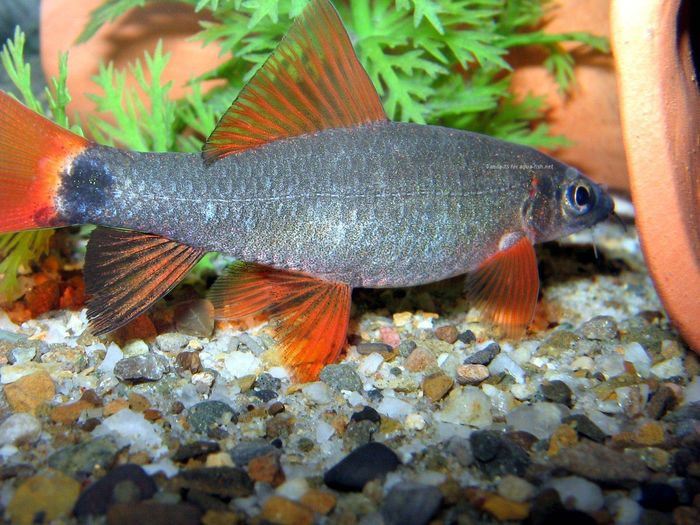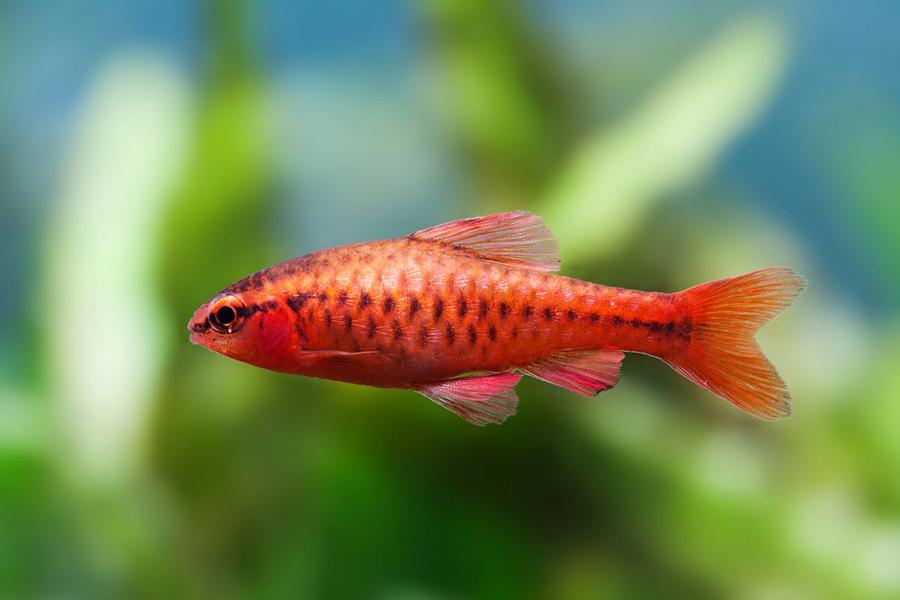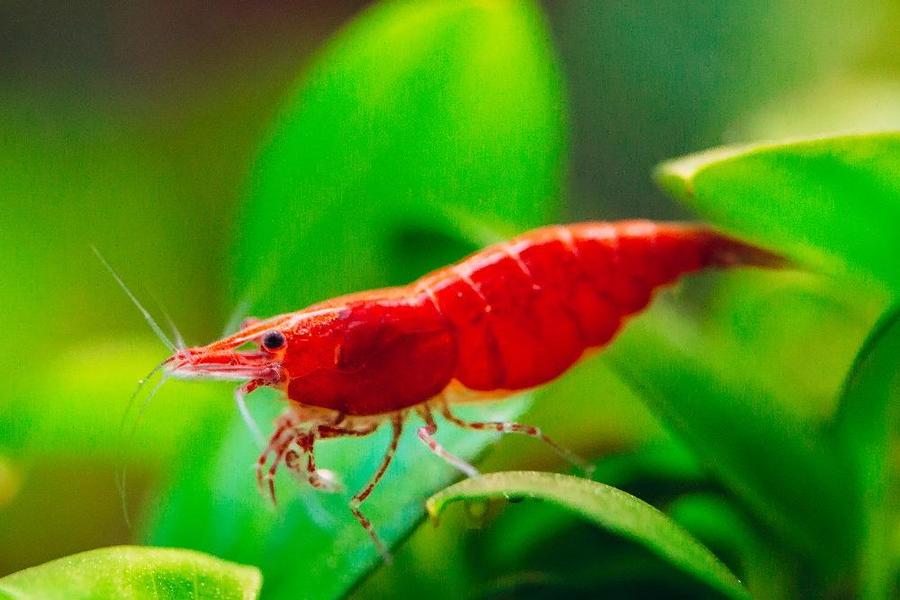Zebrafish (Danio rerio)attracts potential owners with their small size, endurance, pretentiousness, and low price. You can get acquainted with the world of aquarists or introduce a child to it with the help of these bright, mobile, cute creatures. What should be the dwelling for them? In this tutorial, you will learn how to furnish a Zebrafish aquarium.
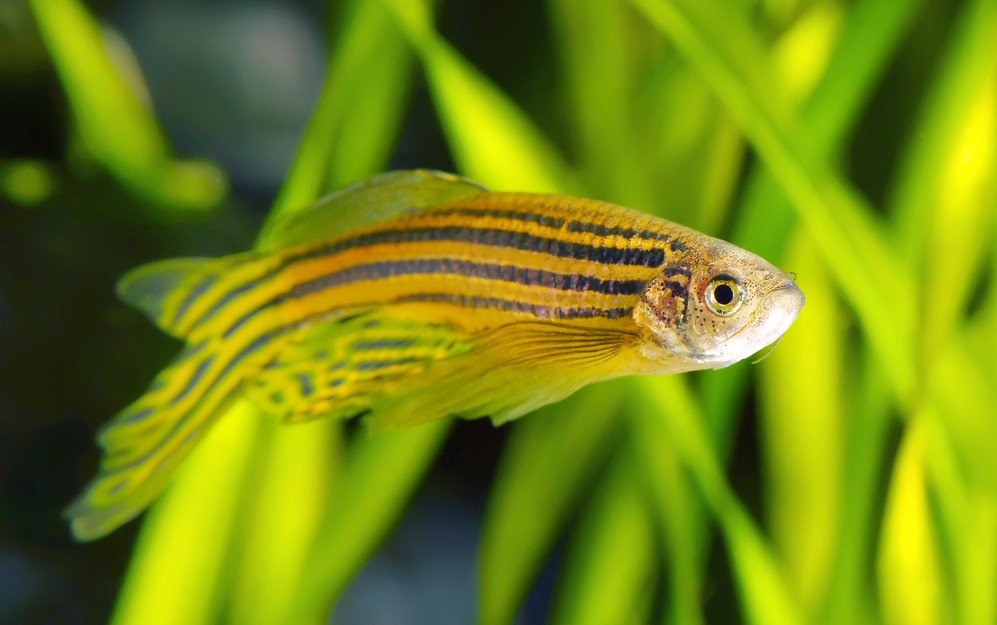
Choosing An Aquarium
When choosing a house for fish, first of all, you need to focus on their size and lifestyle. For small, non-territorial, and unpretentious fish. We recommend that 1 liter of waterfalls on 1 centimeter of the animal’s body.
On average, the body size of a zebra fish is 3 cm. This means that one fish should have 3 liters of water. If you start a flock of 8-10 tails, then you can get by with an aquarium of 30-40 liters. You also need to take into account that a certain amount of volume will be occupied by soil, decorations, and an air layer because the aquarium is not filled to the brim.
Many aspiring fish farmers find that the smaller the aquarium, the easier it is to maintain. Small containers become dirty faster, and their biological balance constantly fluctuates, which adversely affects the fish organism. It is better to choose spacious containers “for growth”, in which you can add more different types of fish.
As beautiful as round vases are, they are not suitable for keeping fish. Equipment cannot be placed in them, and their capacities are too small, which is why there is a constant fluctuation of water parameters. Convex walls do not leave the animals a corner, and they begin to stress, seeing the frightening world around them everywhere.
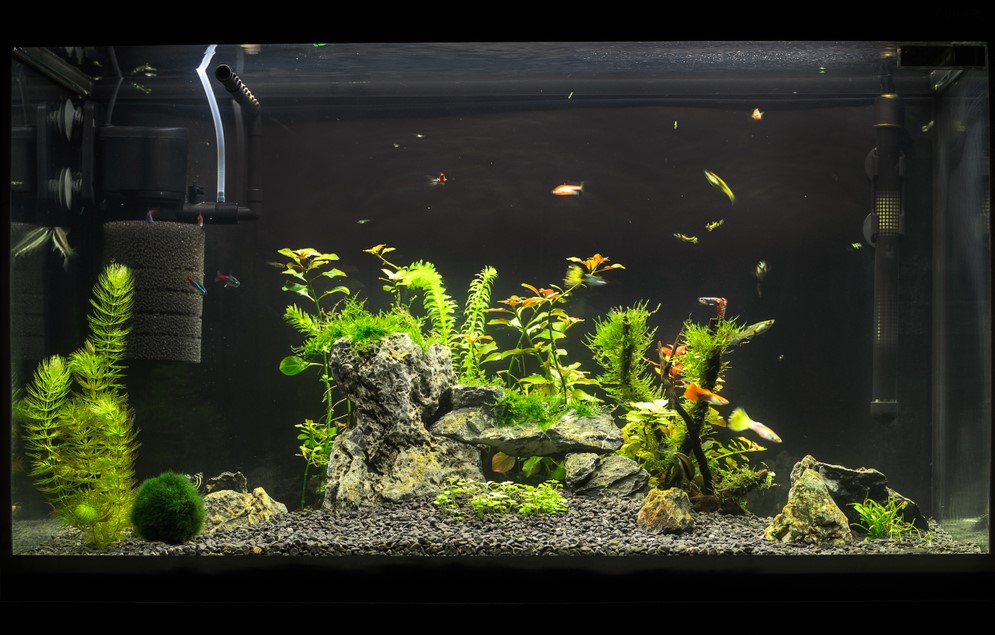
Aquarium Equipment
Although we did not use either heaters or filters before. Now it is better to have these devices, and it is better to leave the creation of closed ecosystems to professionals.
Filters assist in the maintenance of the aquarium by performing mechanical and biological cleaning. Thereby maintaining balance and preventing stagnant water by creating flow. Some models also carry out aeration of the aquarium.
In principle, they can do without a zebra fish heater, but it is better to have it and turn it on at least during the demi-season period, since sudden changes in water temperature cause stress in fish and weakened immunity, which can be the cause of some diseases, such as semolina.
Danio swim near the surface of the water. There is a lot of dissolved oxygen in this layer, so if the planting densities are not too high, and there are live plants in the aquarium, you can do without an aerator, especially if there is a filter.
A thermometer is a device that allows you to control the temperature of the water. It is inexpensive and it is best to have it so that you are always aware of the warmth of the aquarium water.
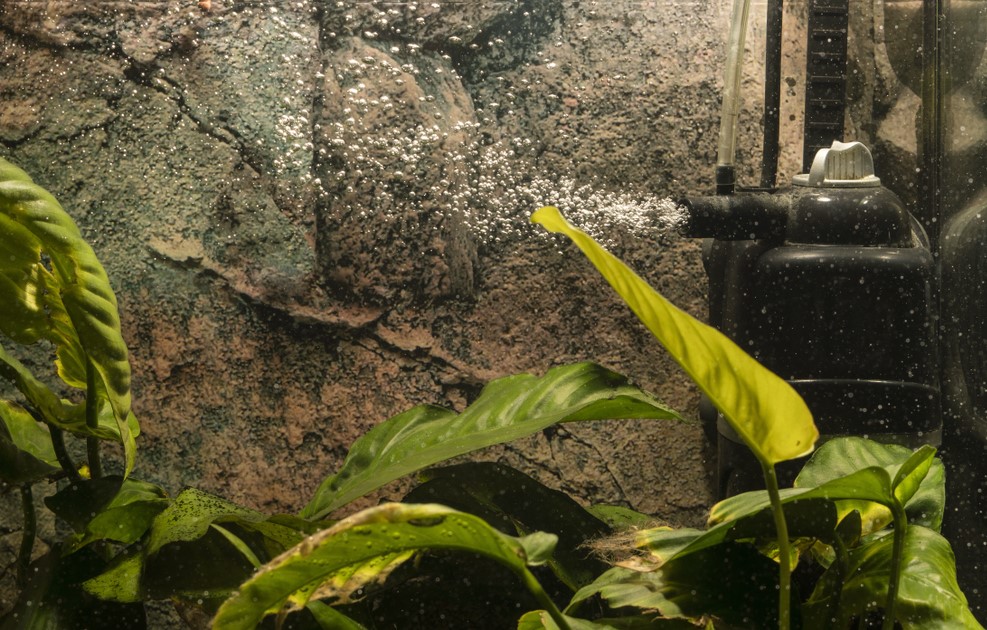
Where to Locate The Aquarium
This is a very important part, and in no case should you skip it.
It is not worth buying fish on the same day you purchase an aquarium. Yes, I really want to admire the mischievous flock as soon as possible. But the fish from you from the store will not go anywhere, because these are very popular animals, and they are always available in the assortment.
First, find a location for your aquarium. The container should not expose to direct sunlight. You should not choose places near the battery, since the heating of the water, in this case, cannot be controlled. It should also be in a convenient location and not be at risk of being overturned.
The surface on which the aquarium will be located should be smooth and level. Its walls should not go beyond its limits. It is better to place a soft foam pad under the vessel. It will smooth out all irregularities and prevent cracking of the bottom.
What To Do After Set up An Aquarium
After the aquarium is set up, fill the bottom with soil and fill the container with tap water. It is not necessary to defend it separately, chlorine has not been used for disinfection for a long time. Other substances use that quickly evaporate.
Install the filter in it and turn it on.
You can also add water from another long-running aquarium to the container, the main thing is that it is safe. This will speed up the start-up process, as the water from another aquarium contains beneficial nitrifying bacteria that will settle on the filter sponge and in the soil, and will subsequently carry out biological filtration.
Now it’s time to wait. In this form, the aquarium is worth 7 days, during which you can observe how the water in the aquarium turns cloudy, then brightens, then becomes cloudy again. This is a normal process and does not need to be changed.
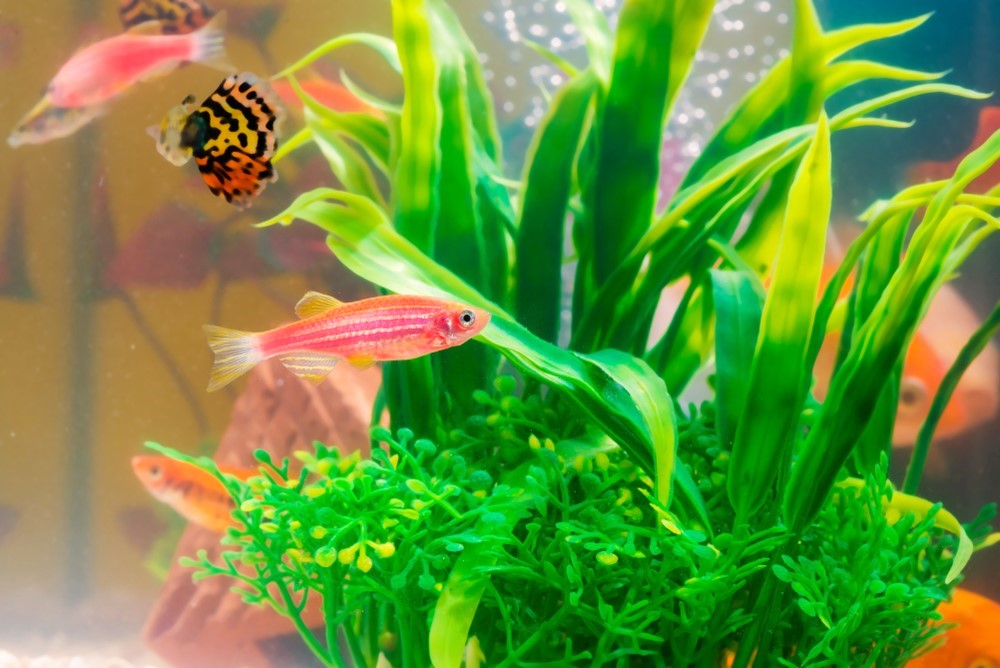
After 7 days, you can plant aquarium plants and wait another 4-7 days, and only then can you safely go to the store for the first inhabitants.
Ideally, starting up the aquarium fully is a very long process that can take up to 90 days. But such measures are necessary for whimsical fish, with zebra fish everything is simpler, they will be satisfied with the recently launched container.
Related : GloFish Breeding Guide
Aquarium Care
For some reason, there was an opinion among the townsfolk that caring for an aquarium is “a very dreary business. Because it must be drained, rinsed, the plants washed, and the fish caught and planted in a bucket, and in general, how do you clean 100-200-liter aquariums? we are so worn out with our 10 liters ”. The program “Living Healthy” clearly demonstrated this way of solving the problem, scaring away many potential aquarists.
So, we hasten to please you, the maintenance of the aquarium is carried out in a completely different way and takes half an hour a week at most. Fortunately, the Danes can be called clean inhabitants, and they do not stain the water very much.
First, you need to clean the walls of the aquarium. To do this, without draining the water, wipe them from the inside with a foam sponge or scraper.
Switch off and remove the filter, put it in a bucket or bowl. Drain 20-25% of the aquarium water into this container. Unscrew the filter carefully, rinse the sponge in this water, rinse the device itself. Collect it and put it in the aquarium without including it.
Add 20-25% fresh water. You can use both standing and from the tap. Turn on the equipment.
That’s all. In our view, purity and the absence of microbes are the guarantees of the health of all living things. But when it comes to natural ecosystems, this opinion is fundamentally wrong. An aquarium is a small body of water in which life boils at all levels, even at the microscopic level. A healthy aquarium is as close to nature as possible, and the less we interfere with it, the better for it.
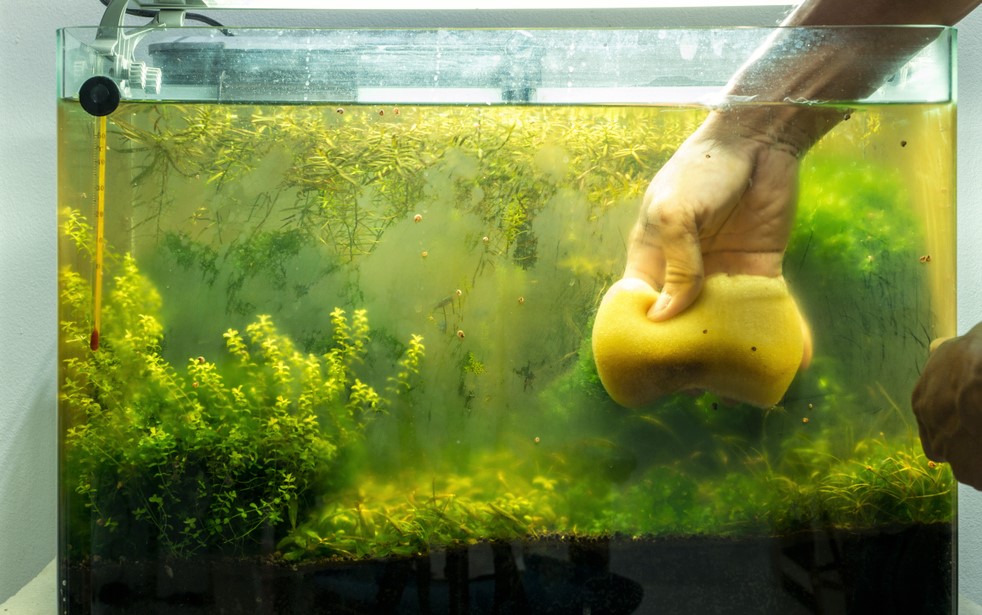
Arrangement of The Aquarium
The aquarium in the house is not just a home for aquatic animals, but also an element of décor, the beauty of which depends only on us. Of course, pet stores have a large selection of different colored soil of acid colors, plastic plants, ceramic ships, and locks, but does it look natural, and most importantly, is it good for zebra fish?
When starting fish for a child, parents, first of all, strive to acquaint him with nature, and the aquarium serves as a window to the underwater world. Does it have pink stones, blue aquatic plants, sunken castles?
A natural aquarium in the interior will always look better than cluttered with various ceramics and plastic plants, and it is much more interesting to watch it because the fish feel safe in their native habitat, which means they will behave much braver.
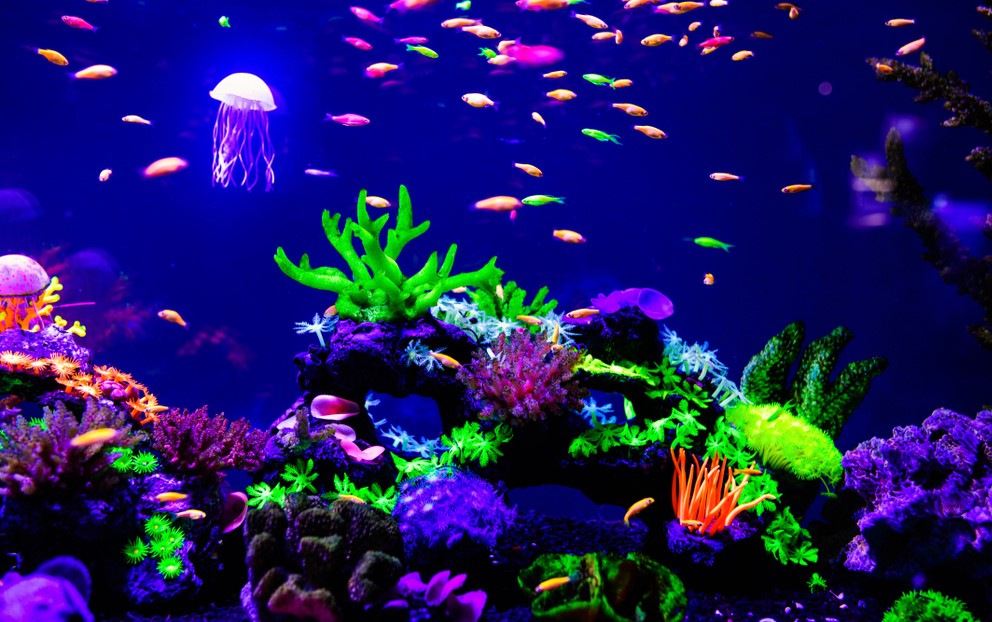
Decorate Aquarium For Zebra Fish
When choosing decorations for zebrafish, it is best to focus on their homeland. Southeast Asia, and in particular the reservoirs of India, Bangladesh, and Nepal. They live in shallow lakes, streams, coastal parts of rivers, and in flooded meadows.
As aquarium flora, you can use Vallisneria, Rotala, Cryptocoryne, Ceratopteris, and some floating plants, such as duckweed or Pistia. Live greens in the aquarium give it a natural look, absorb organic matter from the water, take part in gas exchange, prevent water bloom, and the development of filamentous and red algae, such as black beard and flip-flops. Plastic plants fade over time, do not grow, because of this, various fouling appears on them. Many manufacturers may use substandard plastics or dyes that are toxic to aquatic life.
Fine gravel and river sand you can use as soil. To shade it, use coconut chips or oak leaf litter, which must be dried, rinsed with boiling water, and placed on the bottom of the aquarium. The dyed soil is often coarse, and feces and feed remains are clogged in the cavity between the stones. He can also paint the water, and eventually peel off, from which the aquarium looks untidy.
Stones and driftwood could be used as decorative elements. It is better to choose ceramic decorations in such a way that it is more convenient to wash them and they fit organically into the interior of the aquarium, for example, instead of a ship and a castle, you can use a vase, a coconut shell, various figurines neatly placed in a hidden area.
Sometimes zebrafish are prone to jumping out of the water, so equip your aquarium with a coverslip.
The light in the aquarium should be on for 10-12 hours.
Aquarium Neighbors For Zebra Fish
Danio is a peaceful, livable fish that inhabit the upper layers of the water. Very often the water column and the bottom seem empty, so you can try to add neighbors to the zebra fish.
They should be peaceful animals living in tropical waters. The haracin barbs inhabiting the water column, labyrinth barbs, and small barbs living with them in the same biotope, coexist well with zebra fish. Good neighbors are rassors and micro – rasses, guppies, swordtails, mollies, and platies.
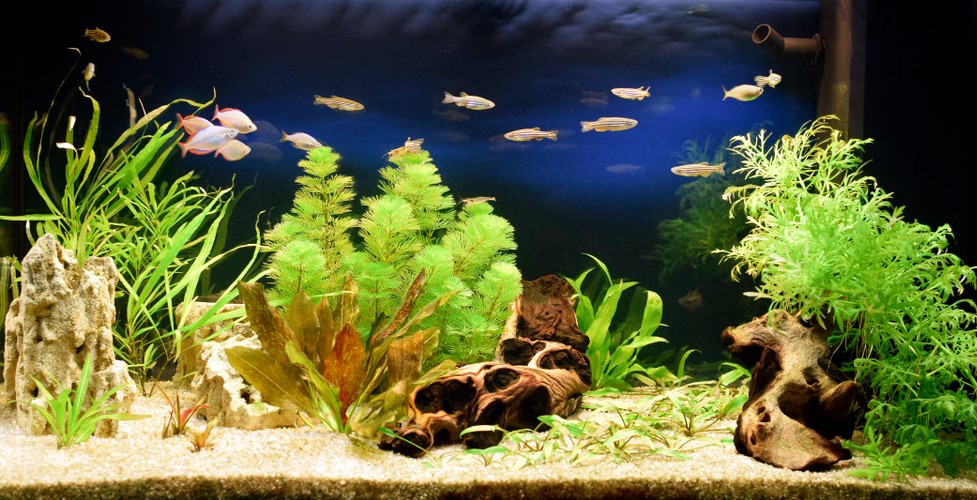
If you are planning to add neighbors, you will need a spacious aquarium.
Many aquarists choose zebra fish as their first fish because of their unpretentiousness and pleasant, interesting swimming style, reminiscent of dance. In addition, they are not characterized by such enormous fertility as in guppies, because not all owners are ready to take responsibility for multiple offspring. In any case, this fish will forgive your inexperience and help you take your first steps in an aquarium.


